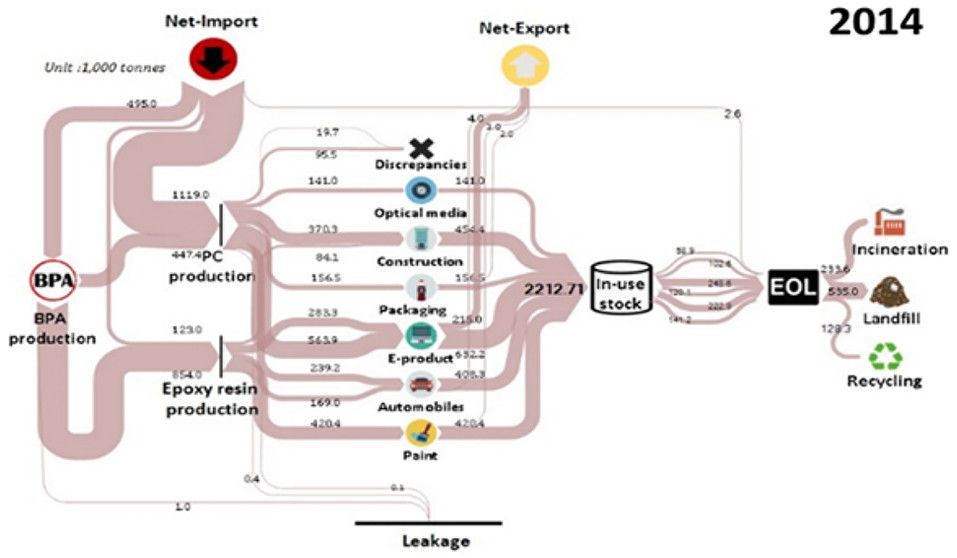Jiang, Daqian*; Chen, Wei-Qiang*; Zeng, Xianlai; Tang, Linbin
Environmental Science & Technology 2018 52 (6), 3706–3715. DOI: 10.1021/acs.est.0c02870
Abstract
Bisphenol A (BPA), a synthetic organic chemical, is creating a new category of ecological and human health challenges due to unintended leakage. Effectively managing the use and leakage of BPA can benefit from an understanding of the anthropogenic BPA cycles (i.e., the size of BPA flows and stocks). In this work, we provide a dynamic analysis of the anthropogenic BPA cycles in China for 2000–2014. We find that China’s BPA consumption has increased 10-fold since 2000, to ∼3 million tonnes/year. With the increasing consumption, China’s in-use BPA stock has increased 500-fold to 14.0 million tonnes (i.e., 10.2 kg BPA/capita). It is unclear whether a saturation point has been reached, but in 2004–2014, China’s in-use BPA stock has been increasing by 0.8 kg BPA/capita annually. Electronic products are the biggest contributor, responsible for roughly one-third of China’s in-use BPA stock. Optical media (DVD/VCD/CDs) is the largest contributor to China’s current End-of-Life (EoL) BPA flow, totaling 0.9 million tonnes/year. However, the EoL BPA flow due to e-waste will increase quickly, and will soon become the largest EoL BPA flow. The changing quantities and sources of EoL BPA flows may require a shift in the macroscopic BPA management strategies.
Graphic Abstract
